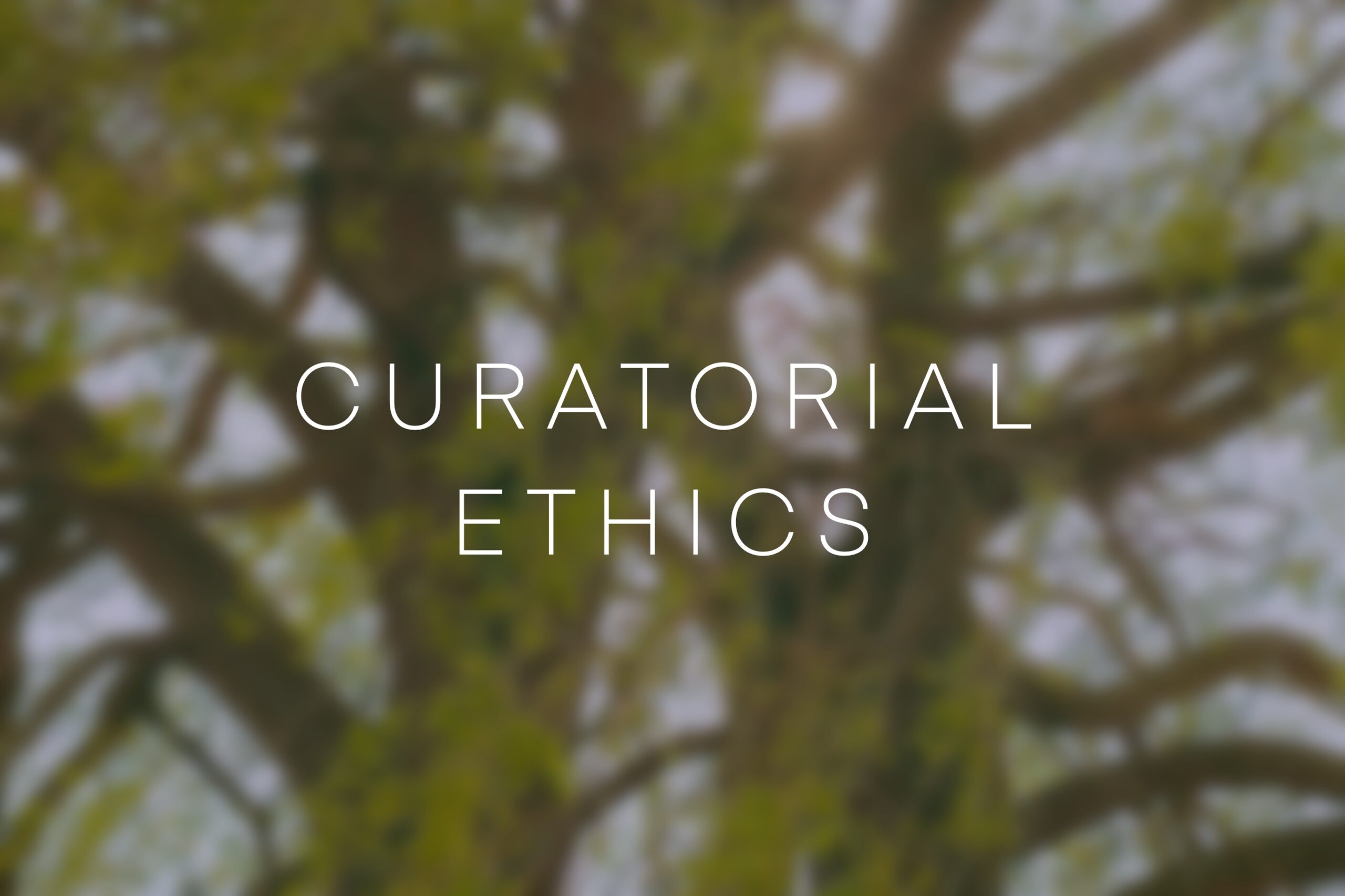Week 8: Curatorial Ethics

Curatorial Ethics
The etymological meaning of ‘curator’ means one who has a duty to take care. Responsibility is the core principle of curation; thus, ethical practice should be at the forefront of any curatorial project (Schuppert, 2021).
So in the week 8 collective planning meeting, we mentioned the possibility of offering volunteer opportunities, stating that this would be possible for including students from appropriate courses, as it would be an equally beneficial situation, where we, as the curators, would receive the additional labour that would be needed to complete the curatorial project, while the unpaid volunteer individual would receive the much-needed experience that is required to move into any professional career in contemporary society.
However, independent curator Mirjami Schuppert (2021) states that though the notion of unpaid labour within the contemporary arts field is a structural issue and therefore should not be primarily ‘examined as a curator’s personal responsibility’ (p. 1), simultaneously, the actions of the curator can still perpetuate this standard; the individual curator cannot ‘renounce their responsibility toward the artist because of structural flaws’ (p. 1). Despite the standardization of unpaid labour in creative fields, Schupppert identifies this as an unethical curatorial standard.
Types of Institutional Ethics:
Institutional museum and gallery ethics can be divided into two branches: perceived ethics and operative ethics (Schuppert, 2021). The former refers to the duty to society; in my project, this would be the social responsibility to include artists with diverse perspectives to give an audience a comprehensive view of the ecological issues that I am elevating. Speaking more from a meta-exhibitionary standpoint, the choice to focus on a socially engaged and political topic is designed with the intention to bring about a perceptual change in the audience’s worldview. Though an ambitious statement, an ecological exhibition is ethical by nature due to its inherent service to society. The latter is the area that I found troublesome in the week 8 collective discussion, as well as the issues that I discovered within my own curatorial project. Operative ethics describes the organizational structuring of a museum space, and by extension, a gallery exhibition space. Behind the exhibition presented to an audience, this form of ethics is where we need to consider not only the payment of artists and space but also who the individuals and organizations that benefit from the exhibition are. Within my climate-focused exhibition, the space (even if it met all the aesthetic standards) would not be usable if the owners/operators of the space were to use hiring fees or the public relations benefits associated with an exhibition that has a high perceived ethical value to further a capitalist/non-sustainable agenda. Similarly, in addition to the sort of biographical artist research that I suggested in my analysis of the Hunterian and Tramway exhibitions, advanced knowledge of the artist would need to be conducted prior to an offer for involvement for the same reasons.
Artist Ethics
Operative ethics would also include appropriate compensation for the artists. I previously identified that an attentiveness to artist desires would be an important part of my curatorial role. As I intend to elevate the artworks of artists who have not had their perspective institutionally recognized (whether as a result of their early career status or stemming from systematic exclusion/marginalization), a curatorial practice that arranges pieces and develops exhibition narratives without appropriate acknowledgment of the specific artist requirements would only be a further incarnation of the systematic barriers that separate these artists from large-scale institutional organizations. Hence, I intend to work closely with artists in the development of display pieces, as well as the theoretical and aesthetic arrangements of pieces within the exhibition space. Alison Gerber and Clayton Childress (2020) of the Universities of Uppsala, and Toronto, respectively, note that artists are widely exploited and under compensated in engagement with traditional institutions. Stating that the fee for the rental exhibition of work does not compensate for the time and money that is associated with communication, transport, and any other form of task that is taken by the artist in the development of the exhibition. Backman et al. (2006) note that the work of the art handler is recognized as a valued form of work and is paid correspondingly; however, the handling of the work of art by the artist themself is frequently overlooked when galleries and museums reach financial compensation for the artist. As such, when I develop my budget, it will be my obligation to include additional funds that represent the additional forms of engagement that each artist completes in exhibition preparation. Further, Gerber and Childress discuss the forms of property that are formed in art making, specifically that in the creation of any piece of art, there are two distinct forms of property that are created. First, there is the material ownership that the artist may sell, rent, or lend. However, despite no longer having physical ownership, the copyright and intellectual property are maintained by the artist. We end with a confusing situation where the artist can sell the artwork, a painting for example, relinquishing ownership of all the materials that construct the image, whilst retaining ownership of the image itself. As a result, the painter would have the rights to sell prints, remixes, or recreations of the sold painting, only relinquishing this form of property with a separate form of purchase. Though I am not proposing the purchase of the intellectual property, the use of images of the artwork would have to be used for marketing/promotion material, and thus, compensation would have to be offered for this use and anticipated in my budget.
Bibliography:
- Backman C, et al. (2006). Ett Gemensamt Ansvar- Ett Inlägg I Debatten Om Avtal. Available at: http://web.archive.org/web/20080201062028/ikk.nu/wiki/ index.php/Ett_gemensamt_ansvar-_ett_inl%C3%A4gg_i_debatten_om_avtal_%282006-12 08%29 (accessed 12/03/2025).
- Gerber, A., & Childress, C. (2017). I Don’t Make Objects, I Make Projects: Selling Things and Selling Selves in Contemporary Artmaking. Cultural Sociology, 11(2), pp. 234-254
- Schuppert, M. (2021). Learning to Say No, the Ethics of Artist-Curator Relationships. Philosophies, 6(1), pp.1-13.



